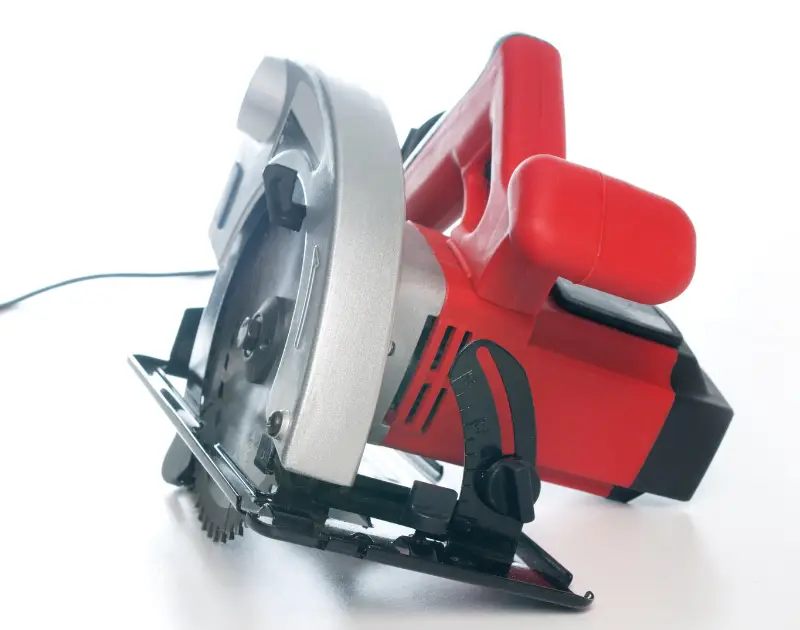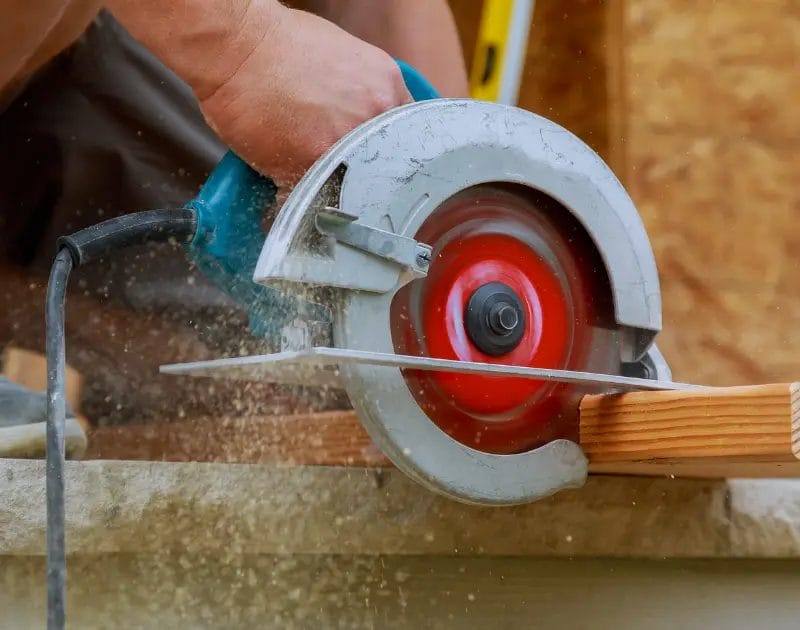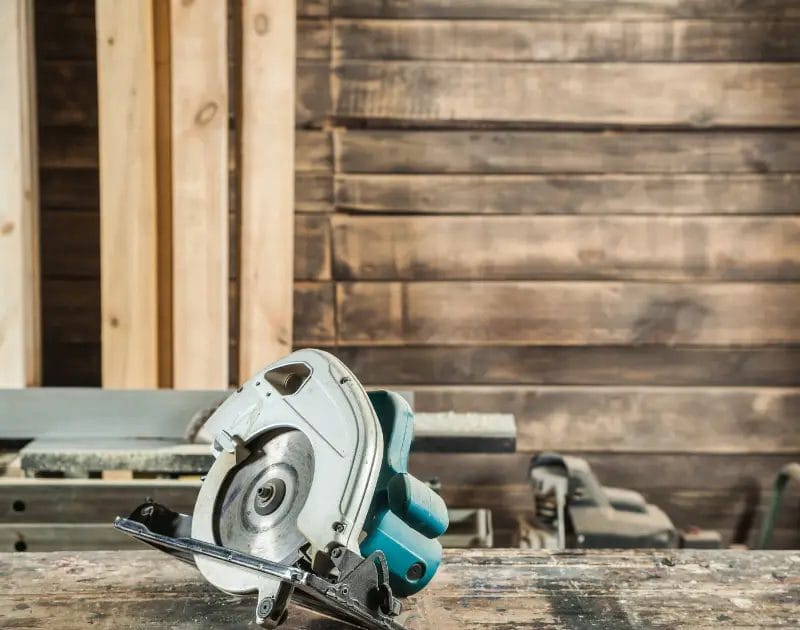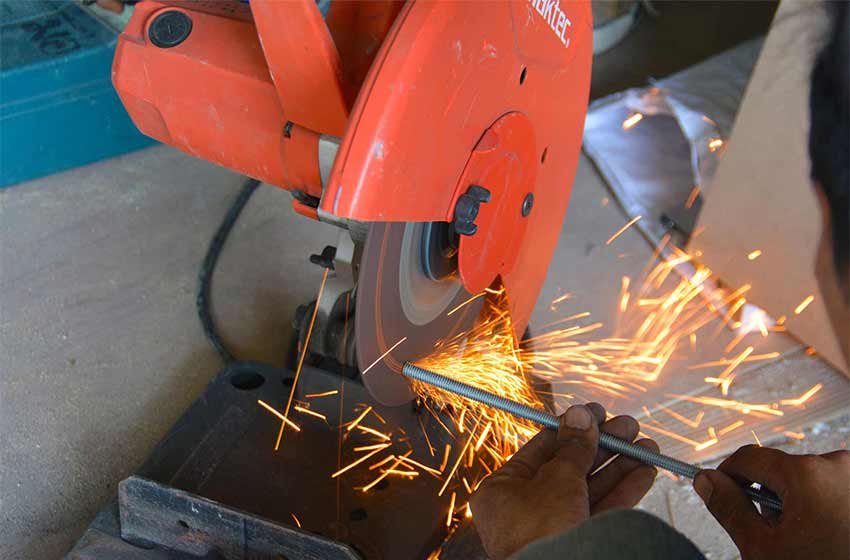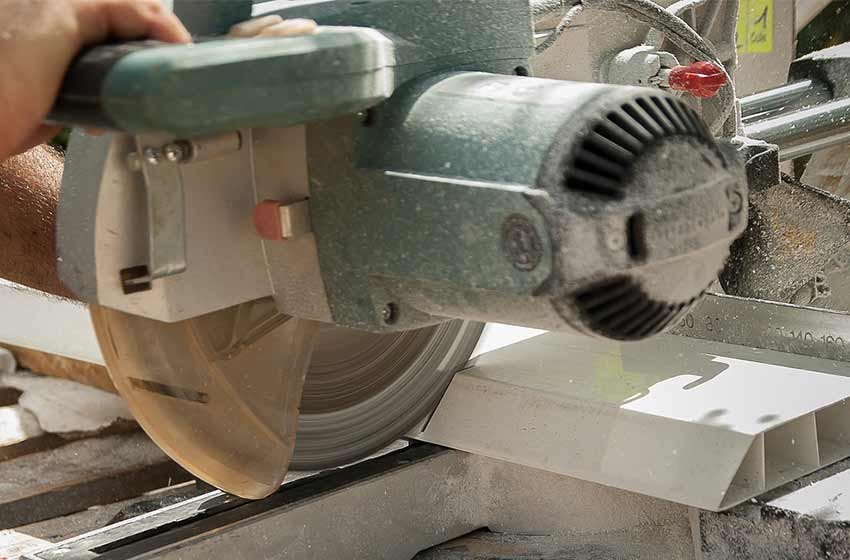Should I Buy a Plunge Saw Or a Circular Saw For Woodwork?
Many DIY woodworkers will often have a trusty plunge saw in their workshop due to them being so versatile with the types of cuts they can make, but they do lack power and portability in comparison to circulars saws, leaving many of us wondering which one is better?
Plunge saws and circulars saw both have their place in woodwork for performing different styles of cuts, for example, if you deal with harder materials such as metal or concrete and want a power tool that is mobile a circular saw is best, but for making cross cuts or angled cuts, a plunge saw is your better friend.
To figure out whether you want to invest in a plunge saw or a circular saw for your DIY, we have gone back to basics and studied how both saws work below, their difference and their advantages/disadvantages over one another to help you make a choice.
How Do Plunge Saws Work?
First off, let’s start with plunge saws, plunge saws are also commonly known as track saws and use a spinning motion with the blade to cut materials, this blade can be moved up and down due to rail which allows you to cut longer materials with ease.
Plunge saws are mainly used for making accurate straight or complex cuts on wood and come in both cordless and corded designs, it’s blade points downwards for depth underneath the saw making it very safe to use and the depth can be adjusted according to the type of material which you are cutting.
Most plunge saws have a dust collector underneath the machine as this is where the blade cuts on the underside so are where most of the sawdust settles.
The main components of a plunge saw are –
- A track/rail guide.
- Blade.
- Handle.
- Depth gauge.
- Motor.
- Dust collector.
How Do Circular Saws Work?
Circulars saws use a disc circle shaped blade with a spinning motion to cut through a variety of materials, these saws are for making rough cuts such as ripping through boards or making standard crosscuts.
As circular saws are typically handheld you need to be quite skilled to use one safely, but when mastered you can make different types of cuts and even make smoother finishes. They come in both corded and cordless designs.
Circular saws look very similar to plunge saws but do not have a rail track, they use a blade guard as the blade is exposed and have an adjustment knob to change the speed of the blade if needed according to the material you are cutting.
These saws typically don’t have a dust collection system so you might need to use an extractor in this case.
The main components of a circular saw are –
- Circular blade.
- Blade guard.
- Motor.
- Adjustable speed knob.
Main Differences Between Plunge Saws & Circular Saws
Now we know the basics about both of these saws and how they operate we can get into comparing the main differences between both saws so as you can start to get an idea about which saw might be better for your woodworking.
We have listed the main differences between both plunge saws and circular saws below.
Portability
Circular saws are great when it comes to portability, they can be carried around anywhere for work with ease and don’t take up too much storage space too, plunge saws differ as they have a long track/rail guide which makes them much less portable.
You will need more storage space for plunge saws too because of the track.
Accuracy & Flexibility
As long as you can get used to using a circular saw and its power, then circular saws can be very flexible to work with, allowing you to make any type of cut with ease such as cross-cut, angled cut or curved cut. Plunge saws are less flexible as the saw is fixed on the machine meaning you can’t move it to other places, only where the rail allows.
In terms of accuracy however plunge saws do tend to be more accurate because of the fixed position for making straight cuts, it takes a fair amount of experience to make accurate cuts with a circular saw.
Safety
Operating both machines with the right safety equipment makes them equally safe to use, the only difference between the two saws in terms of safety is that the track saw has its blade located under the machine, unlike the circular saw which has exposed making the plunge saw a little safer to use.
Dust Management
Plunge saws have an effective dust collection system and don’t create too much mess as the blade is located underneath the machine keeping the dust out of your way, circulars saws on the other hand eject dust from the blade wherever and don’t often have a dust extraction system.
Finishing
For the cut finish, a plunge saw will often be easier to cut with than a circular saw and gives a smoother finish to your woodwork, circular saws on the other hand tend to give a rougher cut as they are harder to control.
Plunge Saws Vs Circular Saws – Which Should You Choose?
After seeing the main differences between a circular saw and a plunge saw, you might still be stuck between the two types and unsure of which saw to invest in.
We have compared both saws pros and cons below to see which power tool is the better investment to help you out.
Plunge Saws
The main advantage of plunge saws over circular saws is that they are very accurate for making all kinds of cross cuts, angled cuts and straight cuts, they are also safer to use as the blade is enclosed and their dust collection system is better for your health.
Plunge saws are also the better choice if you are a beginner woodworker as they are simple to cut with, they allow you to make deep cuts in a thick wood and the tracking feature gives you extra control.
Drawbacks of a plunge saw when compared to a circular saw is that they are not portable due to their large track guide, this means they take up more space in your workshop too. Workpieces typically have to be very flat to be sued with this device too and you might need extra support for some longer pieces.
In comparison to a circular saw these plunge saws are less flexible too as they are restricted by the track.
Pros
- Very accurate.
- Easy to control.
- Safer than circular saws.
- Dust collection.
- Allows you to make deep cuts.
Cons
- Needs support for flat pieces.
- Not portable.
- Restricted by track.
Circular Saws
Circular saws are the winner over plunge saws when it comes to durability thanks to their durable circular blade which is better for dealing with non-wooden materials and ripping boards.
These saws are additionally very portable and don’t take up a lot of storage space, they are a fast tool for cutting through large pieces of material and with experience you can make any type of cut you want.
Downfalls of circular saws in comparison to plunge saws are that they are harder to control and can be less accurate for making cuts with, they additionally have no dust collection system meaning dust can go anywhere during use.
Pros
- More flexible than plunge saws.
- Durable for cutting all kinds of material.
- Portable.
- Great for ripping boards.
Cons
- Harder to control.
- Less accurate for making cuts.
- No dust collection system.
Conclusion – Which Type Of Saw Is Better For Woodwork?
Overall, the saw you choose comes down to the type of woodworking you will be doing and your experience. For beginners who do standard woodworking straight cuts and angled cuts then a plunge saw would be the better choice.
But for people who have little woodworking experience and want portability, a circular saw would be the more suitable choice.
Last Words
To conclude, plunge saws and circulars saws both have their advantages and disadvantages when compared to each other but are great saws to choose for general woodworking if you want to make different types of cuts. Circulars saws are often better for portability and if you have experience, while plunge saws are the suitable option for beginners, general woodworking and accuracy.
